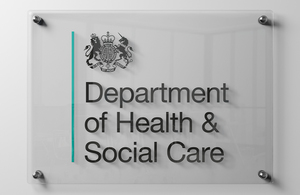World Suicide Prevention Day
Professor Louis Appleby talks about the stigma of suicide, particularly among the young men who are most at risk.

Visiting the Grand Canyon this summer, I was struck by safety posters reminding us that the hikers who need to be rescued are usually young fit men who look as if they could cope with anything. Our idea of who is vulnerable may not be correct. It made me think that the same is sometimes true of suicide risk.
In England, men are three times more likely to die by suicide than women, and most suicides are in men under 50. The risk is so pervasive that Samaritans and the Campaign Against Living Miserably (CALM) are both running campaigns to help men at risk. While every suicide is a tragedy and a shock, some come without warning, leaving family and friends bewildered.
Signs of suicide risk are often unclear: they may be oblique, ambiguous and difficult to interpret. Some people facing a suicidal crisis may not appear obviously distressed. Others will show changes in behaviour, but perhaps not what people around them expect to see. Teenagers may become withdrawn, spending increasing amounts of time alone in their rooms, perhaps online. Men may become irritable or drink more than usual.
Vigilance when men we know are facing problems can be vital, even when they look as if they are coping, like the men in the Grand Canyon posters. It is usually a combination of factors that lead to suicide - debt, living alone, bereavement, bullying and family breakdown can all play a part. Often the final trigger does not look too serious on its own but against a background of other problems it can be hard to bear.
Even when it is clear to relatives and friends that something is seriously wrong, they may be afraid to intervene in case they make matters worse, damage their relationship or even increase the risk of suicide. While asking about suicide can be uncomfortable, it may save a life. And asking about suicide will never put the idea into a person’s head - they may well be relieved that someone realises how bad they feel.
Although suicide and attempted suicide were decriminalised in 1961, the stigma surrounding the subject can discourage people from talking about suicidal thoughts. Some fear they will be labelled as weak, sinful or selfish if they own up to thinking about suicide - and being afraid or ashamed to talk about it may deter them from seeking the treatment they need. This is why the theme for this year’s World Suicide Prevention Day on September 10 is Stigma: A Major Barrier for Suicide Prevention.
Suicide is the leading cause of death in young men but we can all play a part in bringing the tragic figures down. So be alert if someone you know is going through a difficult time, remember you can save a life by asking the difficult question about suicide. And don’t be convinced that they are fine even if they say they are.
In 2012 on World Suicide Prevention Day the Department of Health published the ‘Suicide Prevention Strategy for England’